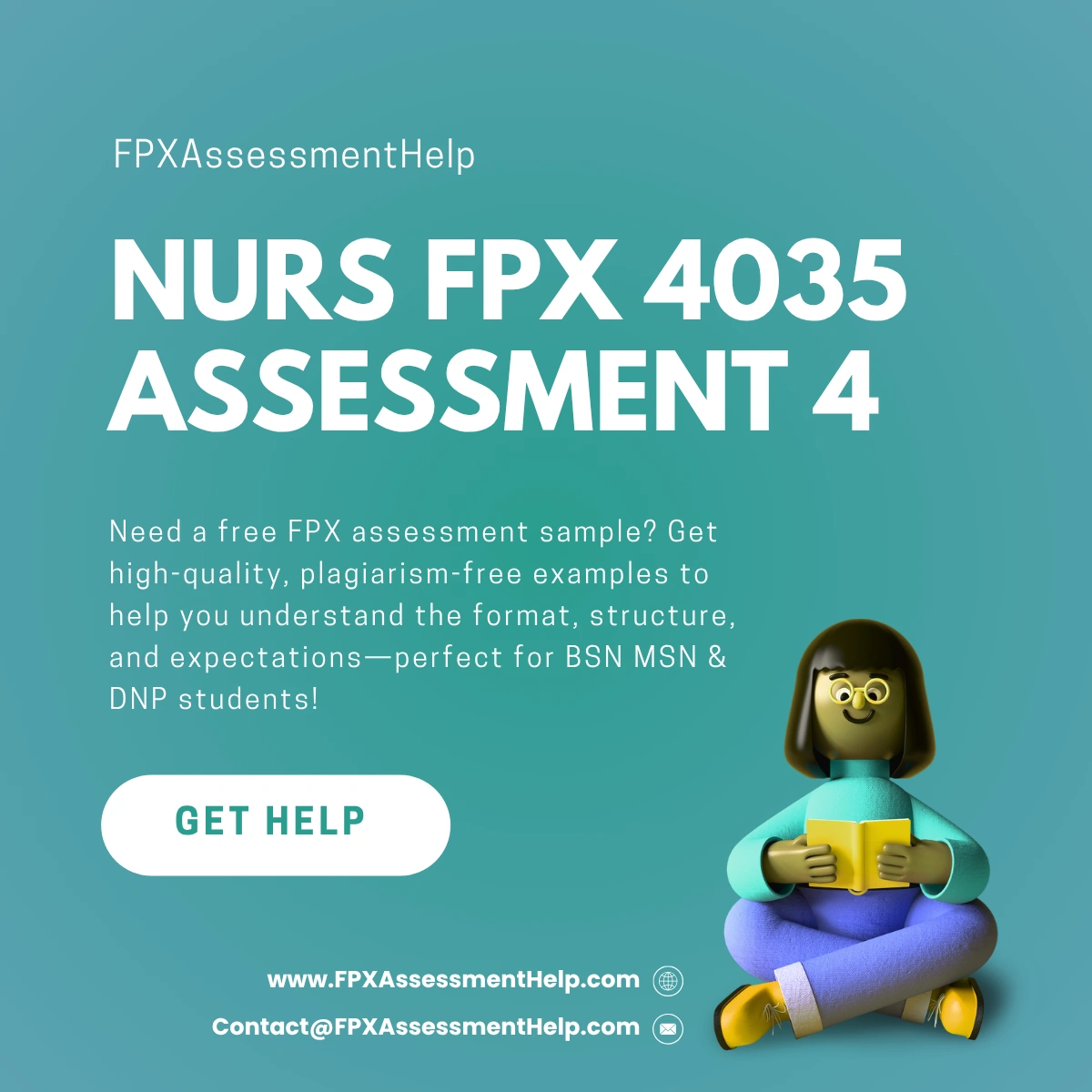NURS FPX 4035 Assessment 4 Improvement Plan Tool Kit
Student Name
Capella University
NURS-FPX4035 Enhancing Patient Safety and Quality of Care
Prof. Name
Date
Improvement Plan Toolkit
At Riverside Community Hospital, a serious diagnostic oversight involving a 67-year-old patient with sepsis prompted a systemic review of care practices. The outcome was the implementation of an Improvement Plan Toolkit designed to enhance diagnostic accuracy and patient safety. This initiative concentrates on four critical areas: reducing diagnostic errors, identifying causes of missed diagnoses, promoting safety-enhancing strategies, and strengthening communication and handoff protocols. It draws upon robust empirical evidence to establish actionable pathways for safety reform (Marshall et al., 2022). Nurses play a central role in applying this knowledge in high-stakes environments such as ICUs and emergency settings, where rapid, accurate diagnoses are essential.
The toolkit emphasizes evidence-based strategies including clinical assessment improvements, the adoption of diagnostic stewardship, and fostering communication tools like SBAR (Situation-Background-Assessment-Recommendation). By addressing vulnerabilities in care—such as gaps in information transfer, test interpretation errors, and staffing inadequacies—it provides a blueprint for safer, more reliable healthcare delivery.
Annotated Bibliography
Understanding and Preventing Diagnostic Errors
The following resources examine the nature, causes, and consequences of diagnostic mistakes, providing valuable guidance for improving clinical judgment and testing procedures.
| Author(s) | Focus Area | Key Insight | Nursing Relevance |
|---|---|---|---|
| Auerbach et al. (2024) | Diagnostic errors in hospitalized adults | Diagnostic errors often result from poor clinical evaluation and testing procedures | Supports nursing advocacy for better test use and critical assessment, especially in high-risk cases |
| Morgan et al. (2023) | Diagnostic stewardship | Encourages appropriate use of tests and clinical judgment | Nurses can apply findings to reduce misdiagnoses and enhance diagnostic accuracy |
| Newman-Toker et al. (2023) | Impact of diagnostic errors | Identifies vascular events, infections, and cancers as high-risk categories | Nurses can prioritize vigilance and early detection in these critical areas |
These studies underscore the urgency of improving clinical reasoning and the interpretation of diagnostic results. Nurses are encouraged to engage in diagnostic stewardship by reinforcing test selection protocols and advocating for continuous training in areas with historically high diagnostic error rates.
Analyzing the Reasons for Missed Diagnoses
This section explores the underlying factors contributing to missed or delayed diagnoses and outlines solutions to mitigate these risks through systemic and technological improvements.
| Author(s) | Core Topic | Findings | Application to Nursing |
|---|---|---|---|
| Barwise et al. (2021) | Diagnostic delay factors | Coordination, system inefficiencies, and poor communication hinder diagnoses | Nurses can improve team-based decision-making and documentation |
| Dixit et al. (2023) | EHR usability and diagnostic accuracy | Poor data visualization and system design affect diagnosis | Nurses should advocate for better systems and identify workarounds |
| Politi et al. (2022) | Delay causes via RCA | Identifies protocol violations and miscommunication | Supports nursing input in developing standardized care processes |
These resources reveal that both human and systemic issues contribute to diagnostic failures. Nurses, who are often the first point of contact, can act as crucial safety agents by helping refine electronic documentation and promoting adherence to procedural guidelines.
Strategies That Enhance the Safety of Patients
These studies examine how environmental, organizational, and staffing-related factors shape patient safety outcomes and how healthcare workers, especially nurses, can promote systemic improvements.
| Study | Focus Area | Outcome Summary | Implications for Nurses |
|---|---|---|---|
| Al-Dossary (2022) | Work environment | Supportive leadership and teamwork enhance patient safety | Encourages nurses to push for leadership and resource improvements |
| Labrague (2024) | Protocol adherence | Following guidelines reduces adverse events | Enables protocol audits and improvement efforts |
| McHugh et al. (2021) | Staffing ratios | Lower nurse-patient ratios lead to fewer complications | Supports legislative advocacy for safer staffing standards |
These findings illustrate that institutional culture and resource allocation are directly linked to safety outcomes. Empowered nurses can drive policy changes and contribute meaningfully to hospital-wide safety initiatives.
Improving Communication and Handover Practices
Effective communication during handoffs is vital in preventing errors, especially in critical care settings. The following resources explore tools and strategies that support interprofessional collaboration and structured handoffs.
| Author(s) | Tool or Concept | Impact | Nursing Application |
|---|---|---|---|
| Scolari et al. (2022) | SBAR quality | Higher quality SBAR linked to training and experience | Reinforces need for standardized SBAR education |
| Labrague (2025) | Nurse-physician collaboration | Collaboration improves job satisfaction and retention | Nurses can foster cross-disciplinary teamwork for better safety |
| Toren et al. (2022) | ISBAR implementation | Structured handoffs reduce errors | Nurses can lead implementation of ISBAR in transition protocols |
These studies emphasize structured communication frameworks like SBAR and ISBAR as essential tools for safe and effective clinical handovers. Nurses are encouraged to advocate for ongoing training and consistent use of these protocols to minimize miscommunication risks.
Conclusion
The Riverside Community Hospital’s Improvement Plan Toolkit provides a structured, evidence-based framework for reducing diagnostic errors and improving patient outcomes. By addressing sepsis recognition failures and communication breakdowns, the toolkit supports a proactive approach to patient safety. Nurses play a pivotal role in applying these strategies—whether by enhancing communication, supporting diagnostic stewardship, or advocating for safer staffing and better workflows. By integrating these tools into daily practice, healthcare teams can deliver safer, more accurate, and patient-centered care.
References
(APA formatted and ordered alphabetically)
Al-Dossary, R. N. (2022). The effects of nursing work environment on patient safety in Saudi Arabian hospitals. Frontiers in Medicine, 9, 872091. https://doi.org/10.3389/fmed.2022.872091
Auerbach, A. D., et al. (2024). Diagnostic errors in hospitalized adults who died or were transferred to intensive care. JAMA Internal Medicine. https://doi.org/10.1001/jamainternmed.2023.7347
NURS FPX 4035 Assessment 4 Improvement Plan Tool Kit
Barwise, A., et al. (2021). What contributes to diagnostic error or delay? A qualitative exploration across diverse acute care settings in the US. Journal of Patient Safety, 17(4), 239–248. https://doi.org/10.1097/PTS.0000000000000817
Dixit, R. A., et al. (2023). Electronic health record use issues and diagnostic error: A scoping review and framework. Journal of Patient Safety, 19(1), e25. https://doi.org/10.1097/PTS.0000000000001081
Labrague, L. J. (2024). Nurses’ adherence to patient safety protocols and its relationship with adverse patient events. Journal of Nursing Scholarship, 56(2), 282–290. https://doi.org/10.1111/jnu.12942
Labrague, L. J. (2025). A systematic review on nurse-physician collaboration and its relationship with nursing workforce outcomes. JONA: The Journal of Nursing Administration, 55(3), 157–164. https://doi.org/10.1097/nna.0000000000001549
Marshall, T. L., et al. (2022). Diagnostic error in pediatrics: A narrative review. Pediatrics, 149(Supplement 3). https://doi.org/10.1542/peds.2020-045948d
McHugh, M., et al. (2021). Effects of nurse-to-patient ratio legislation on nurse staffing and patient mortality, readmissions, and length of stay. The Lancet, 397(10288), 1905–1913. https://doi.org/10.1016/S0140-6736(21)00768-6
Morgan, D. J., Malani, P. N., & Diekema, D. J. (2023). Diagnostic stewardship to prevent diagnostic error. JAMA, 329(15). https://doi.org/10.1001/jama.2023.1678
Newman-Toker, D. E., et al. (2023). Burden of serious harms from diagnostic error in the USA. BMJ Quality & Safety, 33(2). https://doi.org/10.1136/bmjqs-2021-014130
Politi, R. E., et al. (2022). Delays in diagnosis, treatment, and surgery: Root causes, actions taken, and recommendations for healthcare improvement. Journal of Patient Safety, 18(7). https://doi.org/10.1097/pts.0000000000001016
NURS FPX 4035 Assessment 4 Improvement Plan Tool Kit
Scolari, E., et al. (2022). Quality of the Situation‐Background‐Assessment‐Recommendation tool during nurse‐physician calls in the ICU: An observational study. Nursing in Critical Care, 27(6). https://doi.org/10.1111/nicc.12743
Toren, O., et al. (2022). Improving patient safety in general hospitals using structured handoffs: outcomes from a national project. Frontiers in Public Health, 10, 777678. https://doi.org/10.3389/fpubh.2022.777678





